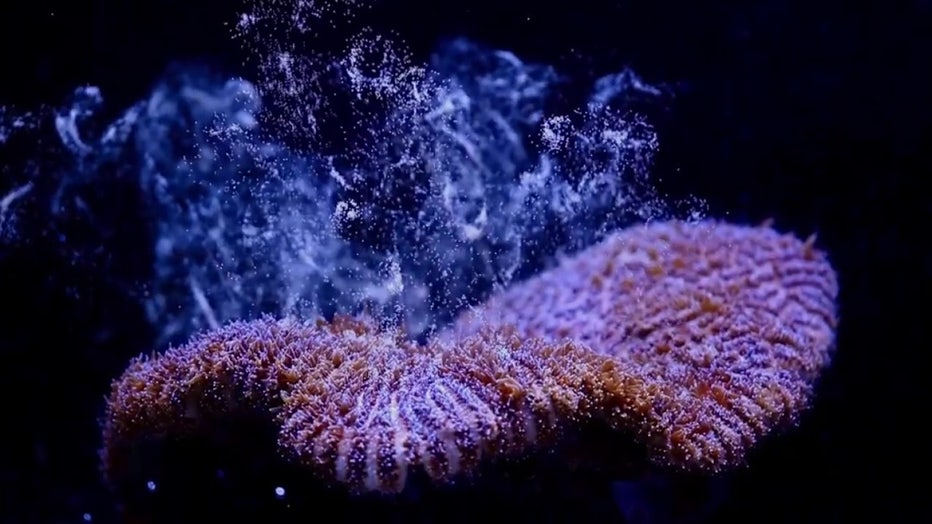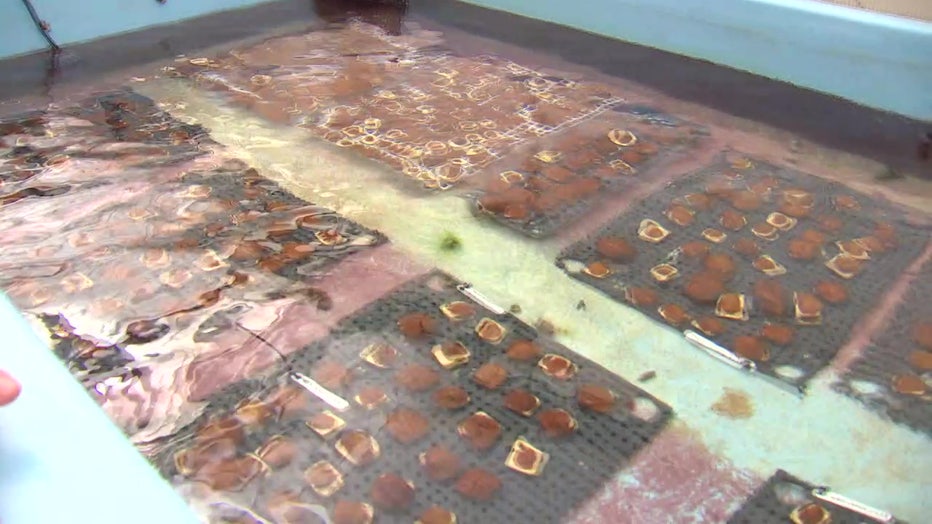Florida Aquarium coral restoration project aims to regenerate, restore state’s reef tract

Coral reef conservation
An innovative coral conservation program at the Florida Aquarium hopes to restore Florida?s reef tract.
TAMPA, Fla. - The Florida reef tract is the world’s third-largest barrier reef stretching about 360 miles along the Southeastern Florida coast. Many of the coral species in this reef are highly threatened, but a program at the Florida Aquarium is hoping to preserve species at risk of extinction in the wild.
"Here at our facility, we have corals we are housing and holding onto, kind of like an ark, and these corals are then used for reproducing them," stated Rachel Serafin, senior coral biologist with Florida Aquarium.
The Florida Aquarium got involved in coral restoration about seven years ago. It has a coral reef housing and spawning system that’s holding corals from the Florida reef tract.
"We saw a need for this type of work to increase the population of the Florida reef tract because it wasn’t helping itself," Serfain shared.
The aquarium’s high-tech spawning system allows coral to spawn and reproduce. Staff raise the baby corals and replant them for the future.

"One of the most eye-opening experiences for me was the individualized care that each coral needs on a daily basis," Serafin commented.
Coral reefs have been impacted since the 1980s, according to Serafin. She says the loss of key herbivores to disease and over-fishing and there has been about a 90 percent decline since then.

She added that pillar coral, which was already rare on the reef tract has been devastated by disease.
RELATED: Environmental groups begin planting coral fragments at reefs off Florida Keys
"Last year, the individuals that reproduced are no longer represented on the reef tract. They have all gone extinct, so having part of their genotypes in this system actually allows for their genetic individuals to live on," Serafin said.

The Florida Aquarium has worked with state and local government to get the corals into the facility, figuring out which corals they need to work with and which ones will be best for restoration efforts and which ones can handle the changing ocean.
"Our hope is that they will thrive, survive and that they will be able to grow up and reproduce and create a fully-functioning ecosystem again," Serafin said.
LINK: Learn more about Florida Aquarium’s coral restoration project at https://www.flaquarium.org/.

